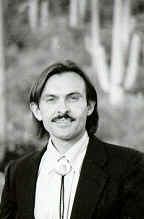
|
|
When health and disease is conceptualized from complex systems concepts, we arrive a topography of hills and valleys, where some valleys represent states of illness and other valleys represent states of health. Consciousness is one descriptor of these states. Brain activity is another. Prigogine's theory of far from equilibrium systems teaches us that systems may have to move far from their current state to achieve sufficient energy to fall into a new attractor basin, transforming from health to disease or disease to health. Healing may require great expenditures or outputs of energy to move the organism into a new area of this topological space, and sometimes in unexpected directions. Homeopathy, for example, is one system of healing that may work by "greasing the skids" between attractor basins and by increasing the natural oscillations that sometimes lead to spontaneous shifts of state. In this workshop, following some discussion of theory we will contemplate the practical aspects of these concepts -- how o we help people find state changing places? Shamanism provides another excellent example of how energies can be moved, while the stories shamans tell provide narratives of whole system behavior. From this perspective we can interrelate such seeming disparate activities as shamanic ritual, neurofeedback, and cranial work, for all move the organism away from its prior state and toward a new potential outcome.
Lewis Mehl-Madrona graduated from Stanford University School of Medicine and completed residencies in family medicine and in psychiatry at the University of Vermont. He is the author of Coyote Medicine, Coyote Healing, Coyote Wisdom, and Narrative Medicine. Other Products by Lewis Mehl-Madrona 1) Aboriginal Models for Integration of Brain, Mind, Spirit, and Body
To View Comments or Join the Conversation: |
Most Viewed of all Products
Interhemispheric EEG Training: Discussion and Demonstration
|

